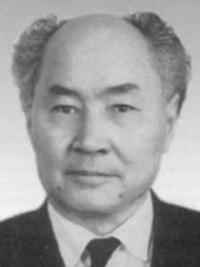You are here
Traces of an ancient man in Bayanaul.

Study tours from Astana to Almaty.
“Most of the monuments of the Bronze Age are concentrated in the region of the Karkaraly and Bayanaul mountains. These are various fences, dolmens, cromlechs. They found perfect and graceful forms of ceramic, bronze and bone products, which confirm that the mountainous areas rich in meadows and ore deposits were the main centers of bronze culture in Central Kazakhstan”
A. Kh. Margulan.
Foreign Independent Tour to Pavlodar.
The Bayanaul mountains, rich in forest vegetation and adjacent to numerous lakes, have been inhabited by humans since ancient times. Many sources talk about this. Academician of the Academy of Sciences of the Kazakh SSR A. Kh. Margulan in one of his articles wrote:
“Most of the monuments of the Bronze Age are concentrated in the region of the Karkaraly and Bayanaul mountains. These are various fences, dolmens, cromlechs. Ceramic, bronze and bone products were found in them in perfect and graceful form, which confirm that the mountainous regions rich in meadows and ore deposits were the main centers of bronze culture in Central Kazakhstan.”
Many expeditions found traces of human activity of the Paleolithic era. Archaeologist A.G. Medoev examined and described the workshop-parking near the village of Maykain, on the way to Bayanaul.
Many times, expeditions were organized by amateur archaeologists of the Pavlodar regional branch of the Society for the Protection of Monuments of History and Culture Sergey Alekseevich Muzalevsky, Yuri Dmitrievich Nechaev, Pavel Ilyich Onoprienko, Anatoly Fedorovich Aleinik and Ivan Vasilievich Lagutin.
Great help was rendered to them by the regional historical museum of local lore. In their published list of archaeological sites of the Bayanaul Mountains - 94 names of barrows, burial grounds, stone statues, ancient scribbles and drawings.
Traces of ancient burials are clearly visible on the forest edges on both sides of the Fish Key, at Jasyby, in other places. S. A. Muzalevsky made a sketch of the looted burial near Lake Dzhasyby, near Dravert Grotto. The tomb with a stone box dates back to the era of Andronovo culture.
Muzalevsky found a Bronze Age grain mill at the place of settlement at the Alekseevsky state farm. This and other finds of the expedition are in the Regional Museum of History and Local Lore.
Near the camp site itself, about three hundred meters to the north-west, there are traces of a settlement, reconnaissance of which showed that people lived here from the Neolithic, Bronze ages to the late nomads.
Rock paintings-symbols are found in the rocky valley of the Nayzatas tract, which depicts paintings of ancient nomadic life, on the coastal cliffs near Lake Dzhasyby, in the tract Olenty and in other places. These symbolic figures were written several millennia ago.
Near many cultural monuments of prehistoric times are hiking trails. Guests of Bayanaul with enthusiasm listen to the stories of leading excursions workers Pavlodar excursion bureau. There is a lot of evidence that these places are one of the centers of ore production of the Bronze Age.
This is evidenced not only by finds of bronze products, but also by traces of mining and smelting furnaces. In 1839, the Barnaul merchants of Popov began exploitation of some copper and lead deposits discovered by people of that era.
Such developments include now abandoned mines in Zhusaly and Aleksandrovka. They are reminded of mounds of bright green rock and other remnants of ore mining. The historical monument of industrial development in the Pavlodar Irtysh region is the working village of Bayanaul district Maykain.
According to legend, the development of polymetallic ores here was carried out by Scythian tribes. In the first half of the 19th century, its ore deposits, like Aleksandrovka, were developed by the merchant and industrialist Popov, and then the English concessionaire Urquhart.
On the basis of Maykain ores during the First World War, a lead plant in Ekibastuz was launched. A remarkable historical place and tract Shokpak, near the central estate of the farm "Alekseevsky." Here was the Popov’s copper smelter, Vladimir Mirsky.
And at present, large reserves of malachite - the most valuable raw materials for decorative and artistic products - have been identified. Recently, its operation began organizing Kazkvartstsemotsvet.
Authority:
Priymak D.P. “Bayanaul reserve” Alma-Ata, Kazakhstan, 1982.







